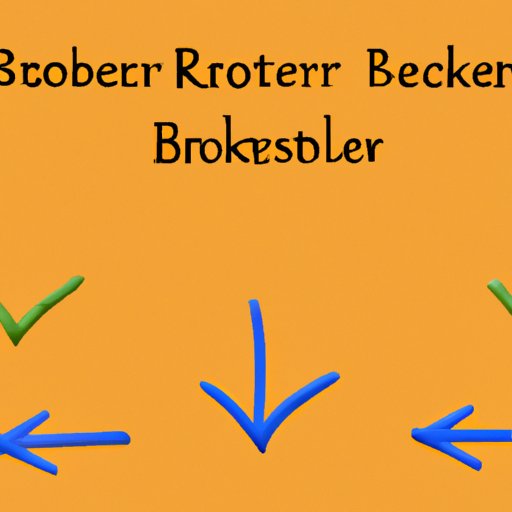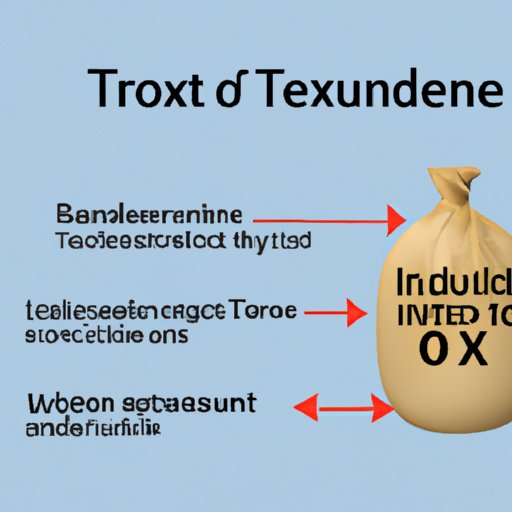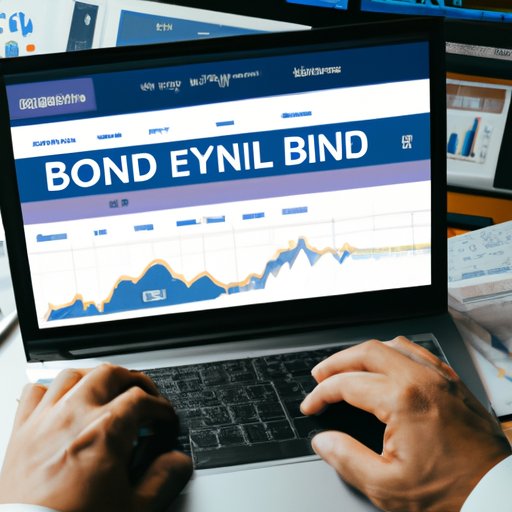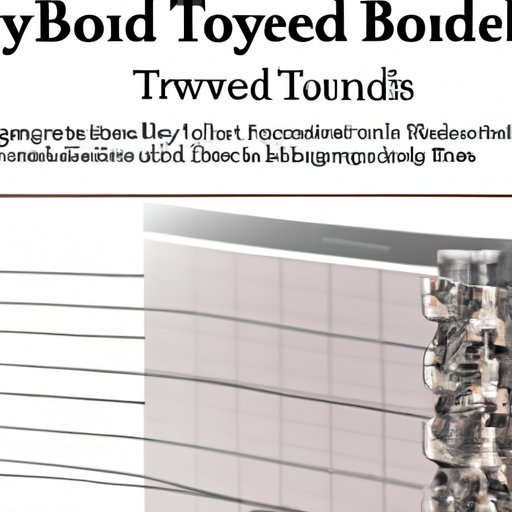Introduction
Bonds are a type of debt security that allows investors to lend money to a government or corporation in exchange for regular interest payments over a fixed period of time. Bond investing is a great way to diversify your portfolio and reduce risk. It can also provide a steady stream of income. However, it’s important to understand the basics before you start investing in bonds.

Explain the Basics of Bond Investing
When you invest in a bond, you’re essentially lending money to a government or corporation. In return, they pay you back the principal plus interest at predetermined intervals. The amount of interest you receive depends on the type of bond you purchase and the current interest rate environment. There are several different types of bonds, each with its own set of risks and rewards.
Different Types of Bonds
There are four main types of bonds: U.S. Treasury bonds, corporate bonds, municipal bonds, and high-yield bonds. U.S. Treasury bonds are issued by the federal government and are considered one of the safest investments. Corporate bonds are issued by private companies and typically have higher yields than Treasury bonds. Municipal bonds are issued by state and local governments and offer tax-free income. High-yield bonds are riskier than other types of bonds and carry a higher interest rate.
Risks Associated with Different Types of Bonds
All bonds come with some level of risk. U.S. Treasury bonds are considered one of the safest investments, but they still carry the risk of default. Corporate bonds carry the additional risk of the company not being able to meet its obligations. Municipal bonds are subject to the financial health of the issuing municipality, and high-yield bonds are vulnerable to market fluctuations.
Interest Rates and Bond Prices
Interest rates and bond prices are inversely related. When interest rates go up, bond prices go down, and vice versa. This is because when interest rates rise, new bonds are issued with higher yields, so existing bonds become less attractive. It’s important to keep an eye on interest rates when investing in bonds.
Identify Different Types of Bonds and Their Risks
Now that you understand the basics of bond investing, let’s take a closer look at the different types of bonds and their associated risks.
U.S. Treasury Bonds
U.S. Treasury bonds are issued by the federal government and are backed by the full faith and credit of the United States. They are considered to be one of the safest investments because they are highly liquid and have virtually no default risk. However, they may not produce as much income as other types of bonds.
Corporate Bonds
Corporate bonds are issued by private companies and offer higher yields than Treasury bonds. They also come with the additional risk of the company not being able to meet its obligations. It’s important to research the company carefully before investing in its bonds.
Municipal Bonds
Municipal bonds are issued by state and local governments and offer tax-free income. These bonds are typically used to fund public projects such as roads, bridges, and schools. They are generally considered safe investments, but there is still some risk involved due to the financial health of the issuing municipality.
High-Yield Bonds
High-yield bonds are riskier than other types of bonds and offer higher yields. They are also known as “junk bonds” because they carry a greater risk of default. It’s important to do your research before investing in high-yield bonds.
Research the Bond Market and Different Bonds
Once you’ve identified the type of bond you want to invest in, it’s important to do your research. You should analyze the financial statements of the issuer to make sure they are in good financial health. You should also understand the credit ratings assigned to the bonds and assess the historical performance of similar bonds.
Analyze Financial Statements
It’s important to analyze the financial statements of the issuer to make sure they are in good financial health. Look for signs of profitability, liquidity, and solvency. If the company is not performing well financially, it could be more likely to default on its bonds.
Understand Credit Ratings
Credit ratings are issued by rating agencies such as Standard & Poor’s and Moody’s. They provide an indication of the creditworthiness of the issuer and the likelihood of default. A higher rating indicates a lower risk of default.
Assess Historical Performance
It’s also important to assess the historical performance of similar bonds. Look at the performance of other bonds issued by the same issuer, as well as similar bonds from other issuers. This will give you a better understanding of the potential risks and rewards of investing in the bond.

Choose the Right Broker for Bond Investing
Once you’ve done your research, it’s time to choose a broker. A broker is a professional who buys and sells securities on behalf of investors. When choosing a broker, it’s important to compare fees and commissions, check out online brokers, and choose a broker with years of experience.
Compare Fees and Commissions
Different brokers charge different fees and commissions, so it’s important to compare them before making a decision. Most brokers charge a commission for each trade, so make sure you understand the costs involved before committing to a broker.
Check Out Online Brokers
Online brokers offer a convenient and cost-effective way to buy and sell bonds. They typically charge lower fees and commissions than traditional brokers and offer access to a wide range of bonds. However, it’s important to do your research and make sure the broker is reputable.
Choose a Broker with Years of Experience
It’s important to choose a broker with years of experience in the bond market. An experienced broker will be able to help you make informed decisions and provide guidance on the best investments for your portfolio.

Understand the Tax Implications of Bond Investing
It’s important to understand the tax implications of investing in bonds. Different types of bonds may be subject to different taxes, including federal, state, and local taxes. You should consult with a tax professional before investing in bonds.
Federal Taxes
Most bonds are subject to federal income tax. The amount of tax you owe depends on the type of bond and your tax bracket. Some bonds, such as municipal bonds, may be exempt from federal income tax.
State Taxes
Some states impose taxes on interest earned from bonds. The amount of tax you owe depends on the type of bond and your state’s tax laws. Check with your state’s department of revenue for more information.
Local Taxes
Some localities impose taxes on interest earned from bonds. Again, the amount of tax you owe depends on the type of bond and your local tax laws. Check with your local tax office for more information.
Develop a Strategy for Investing in Bonds
Once you understand the tax implications, it’s time to develop a strategy for investing in bonds. Start by setting investment goals and considering your investment time frame. Then choose the right mix of bonds to achieve your goals.
Set Investment Goals
The first step in developing a bond investing strategy is to set investment goals. Think about how much money you want to make and how long you plan to hold onto the bonds. This will help you determine which type of bonds are best for you.
Consider Your Investment Time Frame
It’s also important to consider your investment time frame. Longer-term bonds tend to be less volatile and offer more stability, while shorter-term bonds may offer higher yields. Consider how long you plan to hold onto the bonds before making a decision.
Choose the Right Mix of Bonds
Once you’ve identified your goals and time frame, it’s time to choose the right mix of bonds. You should diversify your portfolio to reduce risk and maximize returns. Consider a mix of different types of bonds, such as U.S. Treasury bonds, corporate bonds, municipal bonds, and high-yield bonds.

Use Online Resources to Track Your Bond Investments
Once you’ve developed a strategy and invested in bonds, it’s important to track your investments. There are a number of online resources available to help you monitor market trends, rebalance your portfolio, and track your returns.
Monitor Market Trends
It’s important to stay up to date on market trends to ensure your investments are performing as expected. Use online tools to track the performance of different bonds and identify opportunities for profit.
Rebalance Your Portfolio
As market conditions change, it’s important to rebalance your portfolio to maintain your desired asset allocation. Rebalancing helps to minimize risk and maximize returns.
Track Your Returns
It’s also important to track your returns to make sure you’re meeting your investment goals. Use online tools to track your returns over time and identify areas where you can improve.
Conclusion
Bond investing is a great way to diversify your portfolio and generate a steady stream of income. It’s important to understand the basics of bond investing, identify the different types of bonds and their associated risks, research the bond market and different bonds, choose the right broker, understand the tax implications, and develop a strategy for investing in bonds. Once you’ve done all of this, use online resources to monitor your investments and track your returns. With the right approach, bond investing can be a rewarding experience.
(Note: Is this article not meeting your expectations? Do you have knowledge or insights to share? Unlock new opportunities and expand your reach by joining our authors team. Click Registration to join us and share your expertise with our readers.)
